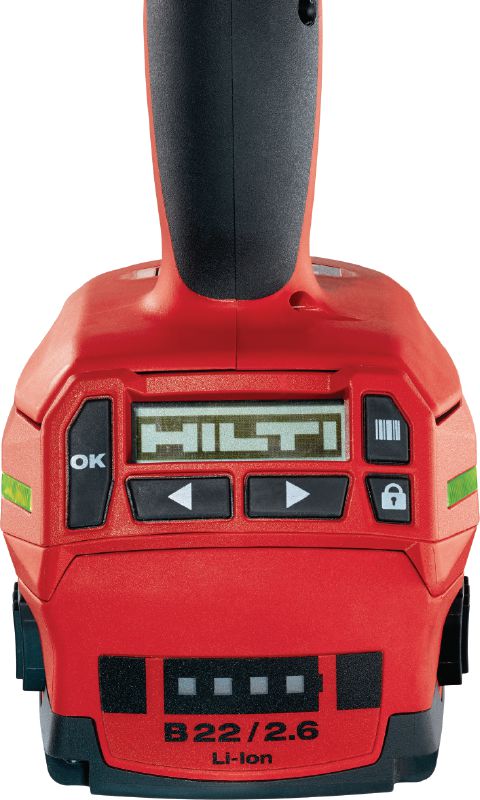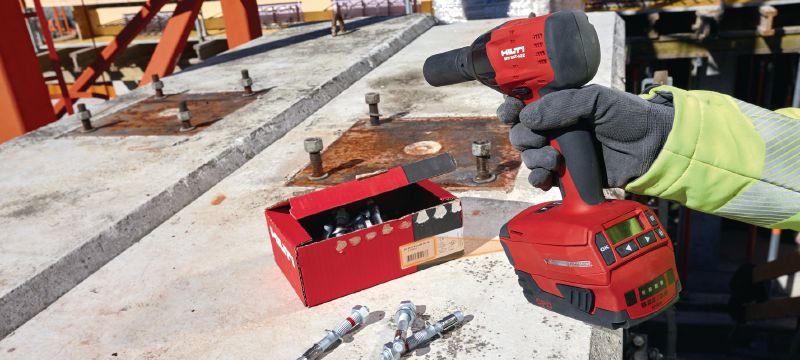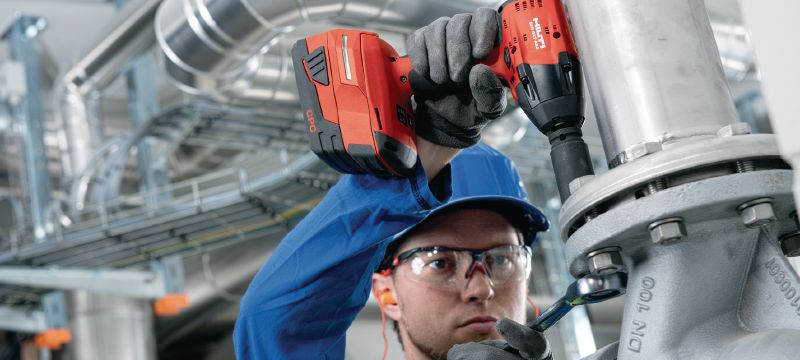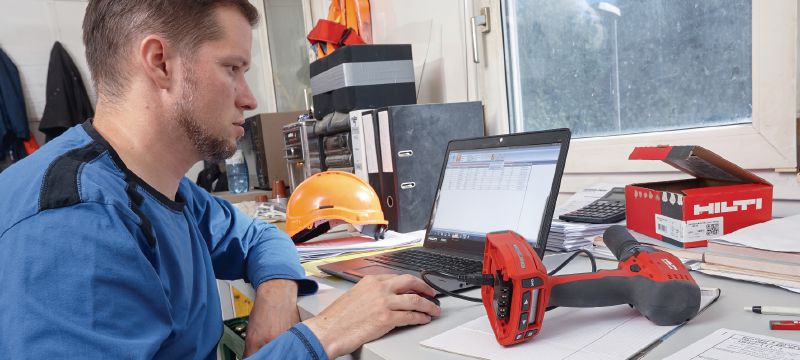SI-AT-A22 Adaptive Torque module
New productItem #r4838537
Adaptive torque module to equip the SIW 6AT-A22 for anchoring and bolting in line with approvals
- Accessory type: Adaptive torque modules
- Weight according to EPTA-Procedure 01/2003 without battery: 0.26 kg
- Dimensions (LxWxH): 143 x 98 x 46 mm
Share
Features & Applications
Features & Applications
Features
- First impact wrench-based Adaptive Torque system (SIW 6AT-A22 and SI-AT-A22 module) on the market for installing Hilti expansion anchors, fastening to cast-in anchor channels, assembling modular support systems or metal-to-metal bolting
- In line with ETA stud anchor approvals
- Barcode scanner for easy, efficient setup while reducing opportunities for mistakes
- Documentation of executed fastenings together with the Adaptive Torque (AT) documentation software for better accountability and back-office efficiency
- Standard impact mode for setting concrete screw anchors
Applications
- Setting Hilti HSA, HSA-R, HSA-R2, HST3, HST3-R, HSL4, and HSL4-G anchors from M8 to M16 in concrete
- Setting Hilti HST2, HST2-R anchors from M8 to M12 in concrete; and HSL3 PAX85 M10 in concrete hollow core slabs
- Repeatable, controlled fastening of metal bolts up to M16
- Assembling MI, MQ, MIQ and MT modular support systems using compatible connectors (including MQN push button connectors for MQ systems)
- Installing T-bolts in HAC-V cast-in anchor channels for fastening curtain wall facades, elevators and MEP installations
Services

Hilti Tool Service
3 days or free
- Servicing is free of charge for up to 2 years, including wear and tear, pick-up and delivery
- After the no-cost period, repair costs are capped
- 3-month no-cost period after each repair
- One click or call is all it takes – we do the rest

Fleet Management
We manage your tools so you can manage your business.
- Monthly usage fee covering all tool, service and repair costs helping to ensure absolute cost control and back-office efficiency.
- Individual labels and online visibility provide tool fleet transparency
- Theft coverage helps to reduce financial risk and unexpected expenses.
- High-performing tools and latest technology help to increase jobsite productivity.
- Loan tools during repair to reduce downtime.






